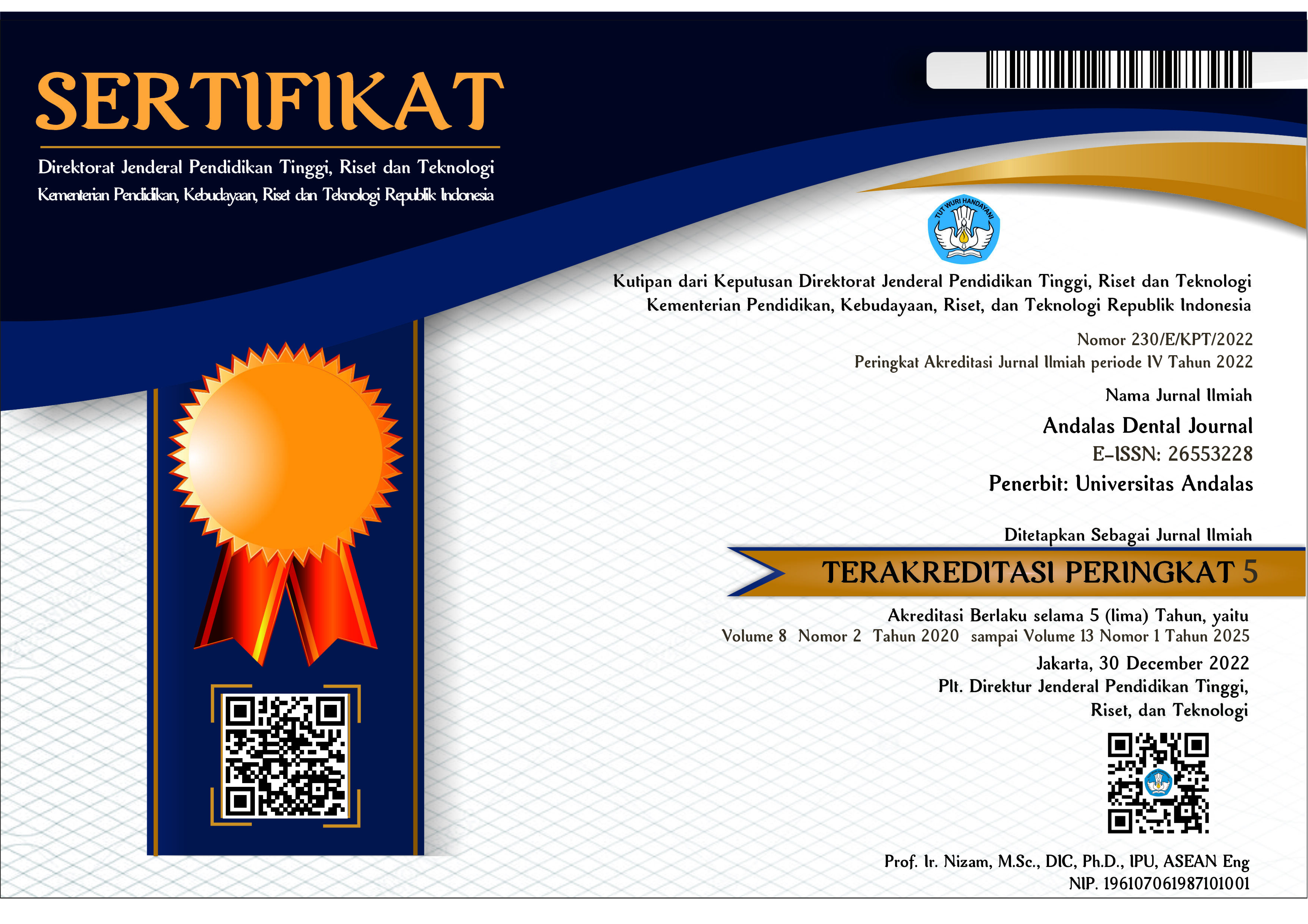PERBEDAAN PH SALIVA ANTARA BERKUMUR DAN TANPA BERKUMUR AIR PUTIH SETELAH MENGUNYAH MAKANAN BERKARBOHIDRAT SEDERHANA
Abstract
The Difference Of Salivary pH Between Rinsing and without Rinsing with Drinking Water After Chewing Simple Carbohydrate. Salivary pH is one of indicator in oral health. One factor that influences salivary pH is diet. Diet simple carbohydrates decrease salivary pH. Rinsing with drinking water suspected that can increase salivary pH. to know how the difference of salivary pH between rinsing and without rinsing with drinking water after chewing simple carbohydrates. Quasi experimental used with pre test and post test design on 40 students as samples. The measurement of salivary pH was done by digital pH meter “Pen Type pH tester”. The test which was used was paired T-test. The result Showed that Salivary pH the rinsing group after chewing was 6.96 ± 0.52 and 7.02 ±0,50 without rinsing. Salivary pH after rinsing minutes to 5 was 6.94 ± 0.52 and 6.79 ±0.52 without rinse. The pH of saliva rinsing the 20th minute was 7.12 ± 0.49 and 6.89 ± 0.50 without rinsing. The results of Paired t-test showed the significant difference from the salivary pH to 5th minute after rinsing and without rinsing with chewing simple carbohydrate foods with p <0.05 (p = 0.009) but, there was no significant difference of salivary pH in the 20th minute and 5 minutes after rinsing and without rinsing with p> 0.05 (p = 0.140). rinsing by using drinking water can increase the salivary pH after chewing simple carbohydrate foods.
Keywords: Rinsing drinking water, Simple Carbohydrates, Salivary pH















